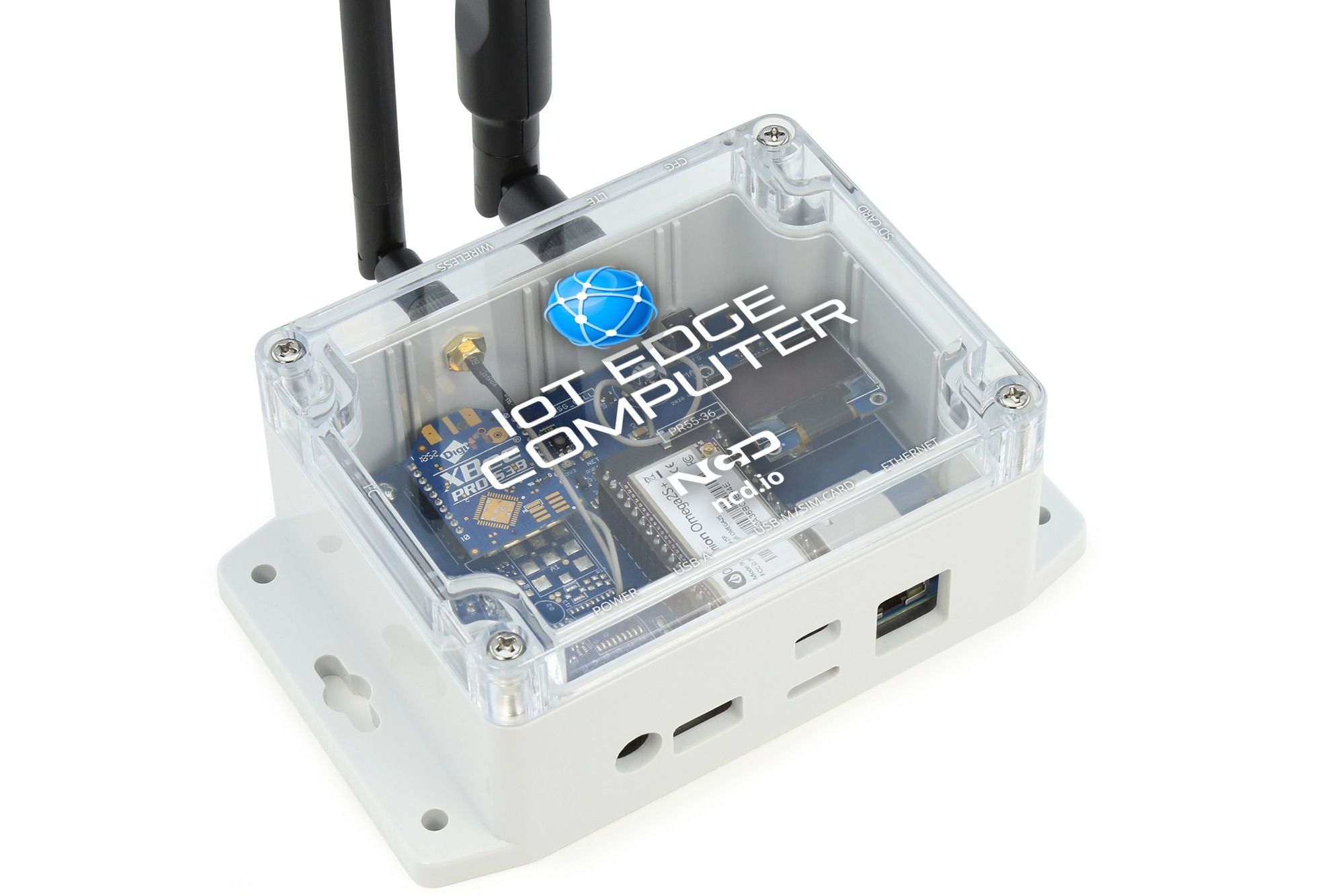What Is an IoT Mesh Network? & How You Can Leverage It
Mesh Networks are changing the way IoT devices are connected. Find here all you need to know about and see if it´s a good solution for you.

What Is a Mesh Network?
A Mesh IoT network is a local network topology where devices are connected directly in a non-hierarchical way to route data across the network. The devices in a mesh network communicate according to a predefined protocol that allows each device to participate in the data transmission on the network.
» FREE TRIAL: Launch Your IoT Application To Market in Less Than 30 Days with Ubidots Drag-n-Drop IoT Dashboards
Mesh networks are usually, but not always, used for IoT applications such as industrial automation and smart metering. All the devices in a mesh topology work together to distribute data across the different components in the network.
IoT Mesh Networking Main Components
There are three major components in an IoT Mesh Network: the gateway, the repeater, and the endpoints.
Gateways
Gateways are devices that connect the mesh network to the internet. Gateways allow network nodes to connect and interact with systems outside the network itself.
Repeaters
Repeaters capture data in the network and reiterate it to the endpoints. They play a vital role in any mesh network because they enable every node to receive messages regardless of how far that node is from the gateway. For this reason, repeaters in every network topology are designed to wake at all times.
Endpoints
Endpoints are devices that receive data from repeaters. They don’t need to network with other elements in a mesh network, and so can remain passive if unused.
Mesh infrastructures work on a number of protocols to transmit data. Given below are the most common ones.
IoT Mesh Networking Protocols
Wirepas is a networking protocol where all devices in a network can route data locally and homogeneously depending on the current radio circumstances. This protocol allows an unlimited number of Wirepas-enabled devices to be connected on a single network.

A typical Wirepas network architecture is fully decentralized. It works efficiently for IoT applications that require low power. It can function on standard LPWA radio technologies, such as Bluetooth Low Energy, in addition to several System on Chip (SOC) applications
Wirepas website offers a complete directory of partner products, including some of our partners, Rigado.

Zigbee Mesh Topology
Zigbee allows long-distance data transmission over inter-connected Zigbee-enabled devices. This network topology comprises three kinds of nodes: coordinators, routers, and end devices. A single coordinator forms the network and routes traffic on it. A Zigbee router plays the role of an intermediate node that relays data from other devices on the network. Routers can also be end-devices, and they never go to sleep mode.
End devices communicate either with the coordinator or the routers. End devices on a Zigbee network have the ability to activate sleep mode, making them highly power-efficient devices. On a Zigbee network, every coordinator or router can feed up to 20 end devices.
The Zigbee protocol allows interoperability between many commercial vendors. DIGI is a good example of a Zigbee chipset provider, which is embedded into many IoT products you’ve likely used or plan to.

Google Thread Mesh Network
Google’s Thread mesh network is a protocol that seamlessly connects devices without a single point of failure. If a single device is unavailable, Thread networks automatically reconfigure. The networking protocol was designed to universally connect Smart home devices.
What makes Thread stand out from other protocols like Zigbee and Z-Wave is that its networks don’t need a hub device. The open, vendor-agnostic, and interoperable technology runs on open standards like IPv6 and a 6LoWPAN foundation.
Even though Thread has gained momentum among several manufacturers, a quick glance at their certified products shows that it’s rather focused on consumer electronics, with very few commercial - not industrial- use cases.

This being said, you will seldom come across the need to use Thread in an Industrial gateway or device.
Bluetooth Mesh
Bluetooth Low Energy mesh networking is a protocol that uses the flooding method. As the name suggests, the technology is built for low-power wireless mesh networks that transmit a high volume of multicast data traffic. It does this by designating some devices on the network as relays.
Devices on a Bluetooth Low Energy network communicate using messages that can be relayed over up to 127 hops on a publish/subscribe mechanism.
Unlike other low power wireless mesh networking technologies, Bluetooth mesh is a complete, full-stack solution that defines everything from the low-level physical radio layer through high-level application layer:
Even though BLE is quite popular in consumer electronics (we all have Bluetooth capable phones in our pocket, right?), some commercial and industrial IoT vendors like Minew, Rigado and EnOcean have harnessed BLE’s unique capabilities to offer low-consumption, inexpensive IoT sensor nodes.

Benefits of Using Mesh Networks
Mesh networks offer a variety of advantages that aren’t found in other network topologies. A few of them are listed below:
True wirelessness
Mesh networks transmit messages using the flooding or routing technique. Flooding makes sure that data is sent through all outgoing links except those that bring in the same data. This is how the network gets "flooded" with information.
With routing, data moves around different network nodes before it ends up at its final destination. This allows each network node to route the data through an appropriate path based on the level of available speed and security.
Efficient Maintenance
Mesh networks are easy to install and maintain. You don’t have to do any preliminary setup of new sensors. Every node added can calibrate itself and connect to the network automatically.
When you physically connect a wireless node to a network connection, say a router, the network nodes closest to it are connected to the internet. This process is repeated for other nodes until the entire network is connected.
With such a mechanism, a lot of time and money is saved in maintaining the network.
Extended Range of Connectivity
If your IoT project can’t run on connectivity methods like Wi-Fi and Bluetooth, a mesh network can support and expand its wireless range.
Traditional wireless signals lose strength as you move farther away from the router or source. In contrast, mesh networks rely on multiple signals that are spread out throughout the entire system.
Since all the network nodes are connected to the system, the node with the strongest, most secure connection is used. This allows other nodes to sleep. In addition, if one node malfunctions, it doesn’t affect the rest of the system.
Mesh networks therefore deliver a wider range of coverage to systems that either can’t support connectivity like Wi-Fi or are situated in locations that don’t support them.
Self-healing algorithms
An important hallmark of the routing method is that the algorithms have self-healing capabilities. This means the network reconfigures if a path breaks.
For example, Shortest Path Bridging involves algorithms that quickly choose the shortest route for data transmission when one of the nodes loses a connection. Hence, the entire network remains stable because the algorithms always use the only available nodes.
On the downside, the system has to use its resources to identify the broken node, a process that is time-consuming.
Challenges You Will Face When Building a Mesh Network and Ways to Overcome Them
Even though the above-mentioned protocols’ goal is to abstract as much complexity as possible, there are still a few hurdles you may encounter while building an IoT-mesh network:
1. High Intelligence of Nodes
Mesh networks are designed to be highly efficient. Ideally, you have to find a way of getting performance reports from individual nodes. On top of that, it can be challenging to have every node gather information about neighboring nodes, understand how to build the route, and change the route if a node isn’t responding.
2. Load Balancing
Network performance usually decreases if a high volume of data passes through a large route. To solve this, you have to invest time in load balancing. Load balancing will optimize the response time and distribute the load across your nodes.
3. Route Management
When running a mesh network, you have to constantly update the routes over which the data is sent. This is because nodes may connect and disconnect from the network without warning. In addition, you may have to resend data in case it doesn’t arrive at the IoT gateway.
A mesh network must also have the ability to break existing routes if no IoT gateway is available. If this doesn’t happen, a lot of power will be wasted when connected devices continue sending data for no particular use.
4. Power Consumption
If you want to properly maintain a mesh network, you need a custom-made CPU that can carry the software that runs the mesh network nodes and channel access method logic.
The Ideal CPU must be efficient and yet power-friendly. This is a bit of a hurdle because there’s no general standard for mesh networking communications.
Is a Mesh Network a Good Solution for Your Company?
A mesh network is a great network solution for your business. The applications are diverse and all aim for efficiency in connectivity.

For example, medical equipment can massively benefit from mesh networks. The self-healing algorithms can quickly identify a broken medical device, automatically reconnect it, and therefore prevent a mass network failure.
If your business heavily relies on connectivity, getting a mesh network is a no-brainer. Besides giving you an efficient way of managing your network, the topology makes sure you won’t have down-time caused by a disconnected computer or sensor.
Originally published 13 Oct 2021
Frequently Asked Questions
Is LoRaWAN a mesh network?
LoRaWAN traditionally runs on a star network topology. This is where end nodes transmit data to a central server through one or multiple gateways. In a LoRaWAN network, all devices are asynchronous and transmit data only when it is available.
However, if you want to tighten the security and range of a LoRaWAN network, you can reconfigure it as a mesh network.
What is an IoT network?
The Internet of Things (IoT) is an interconnected network of everyday objects that send and receive data wirelessly through the internet using sensors, specialized software, and dedicated technologies. While most of them ‘talk’ with the other devices through wireless modes such as LTE, Bluetooth, and Wi-Fi, some of the immobile ones also employ Ethernet communication.
Is mesh better than Wi-Fi?
With the way devices are connected on a mesh network, you’ll get better performance and fewer network bottlenecks than on Wi-Fi. Mesh connectivity brings faster speeds, better reliability, and greater wireless coverage of your home than conventional Wi-Fi.
What is a mesh gateway?
This is a device that connects the mesh network to the global internet.
